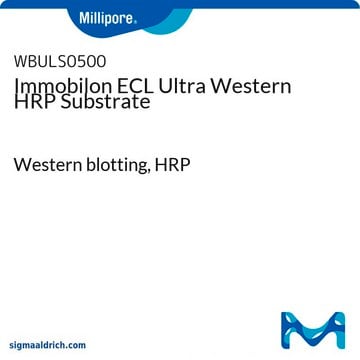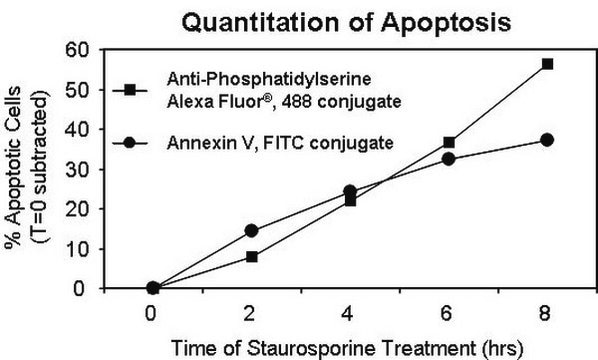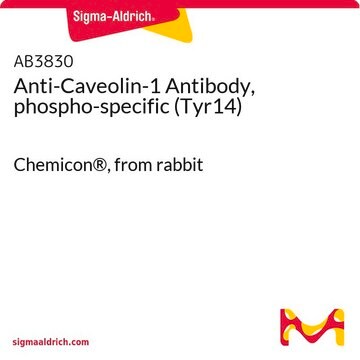05-480
Przeciwciało anty-Eck/EphA2, klon D7
clone D7, Upstate®, from mouse
Synonim(y):
Receptor EPH A2, kinaza komórek nabłonkowych, receptor kinazy tyrozynowo-białkowej ECK, receptor efryny EphA2, receptor białkowej kinazy tyrozynowej komórek nabłonkowych, białkowa kinaza tyrozynowa, receptorowa białkowa kinaza tyrozynowa regulowana przez p53 i E2F-1
Wybierz wielkość
2710,00 zł
Przewidywany termin wysyłki11 kwietnia 2025Szczegóły
Wybierz wielkość
About This Item
2710,00 zł
Przewidywany termin wysyłki11 kwietnia 2025Szczegóły
Polecane produkty
pochodzenie biologiczne
mouse
Poziom jakości
forma przeciwciała
purified immunoglobulin
rodzaj przeciwciała
primary antibodies
klon
D7, monoclonal
reaktywność gatunkowa
mouse, canine, human, rat, bovine
producent / nazwa handlowa
Upstate®
metody
activity assay: suitable
immunocytochemistry: suitable
immunoprecipitation (IP): suitable
western blot: suitable
izotyp
IgG1
numer dostępu NCBI
numer dostępu UniProt
Warunki transportu
dry ice
docelowa modyfikacja potranslacyjna
unmodified
informacje o genach
bovine ... Epha2(512798)
human ... EPHA2(1969)
Opis ogólny
Kinazy białkowe to enzymy, które przenoszą grupę fosforanową z donora fosforanu, zazwyczaj fosforanu g ATP, na aminokwas akceptorowy w białku substratowym. Dzięki temu podstawowemu mechanizmowi kinazy białkowe pośredniczą w większości transdukcji sygnału w komórkach eukariotycznych, regulując metabolizm komórkowy, transkrypcję, progresję cyklu komórkowego, rearanżację cytoszkieletu i ruch komórek, apoptozę i różnicowanie.
Specyficzność
Immunogen
Zastosowanie
Neuroscience
Stożki wzrostu i prowadzenie aksonów
Zgłoszono, że poprzednia partia tego przeciwciała została użyta w teście autofosforylacji immunoprecypitacji, przy użyciu buforu reakcyjnego Mn-PIPES (Romer, L., 1994).
Immunoprecypitacja:
Poprzednia partia tego przeciwciała została zgłoszona do immunoprecypitacji Eck z 500 µg ludzkiej linii komórek nabłonka piersi, która została zlizowana w TBS zawierającym 1% Triton X-100. Użyć 1-4 µg na reakcję.
Immunocytochemia:
Poprzednia partia tego przeciwciała została zgłoszona do immunobarwienia Eck w ludzkich, mysich i szczurzych komórkach nabłonkowych utrwalonych 3,7% roztworem formaldehydu i permeabilizowanych 0,5% Tritonem X-100 w TBS.
Jakość
Western Blot Analysis:
0.5-2 µg/mL of this lot detected Eck in RIPA lysates from human A431 and previously from foreskin fibroblasts, murine 3T3/A31 and rat L6 cells.
Opis wartości docelowych
Postać fizyczna
Przechowywanie i stabilność
Zalecenia dotyczące postępowania:
Po otrzymaniu, a przed zdjęciem nasadki, odwirować fiolkę i delikatnie wymieszać roztwór. Rozdzielić do probówek mikrowirówkowych i przechowywać w temperaturze -20°C. Unikać powtarzających się cykli zamrażania/rozmrażania, które mogą uszkodzić IgG i wpłynąć na działanie produktu. UWAGA: Zmienność temperatur w zamrażarce poniżej -20°C może powodować zamarzanie roztworów zawierających glicerol podczas przechowywania.
Komentarz do analizy
Pozytywna kontrola antygenu: Katalog #12-301, niestymulowany lizat komórek A431. Dodać 2,5 µl 2-merkaptoetanolu/100 µl lizatu i gotować przez 5 minut w celu zredukowania preparatu. Załadować 20 µg zredukowanego lizatu na pas do minigelów.
Inne uwagi
Informacje prawne
Oświadczenie o zrzeczeniu się odpowiedzialności
Nie możesz znaleźć właściwego produktu?
Wypróbuj nasz Narzędzie selektora produktów.
Kod klasy składowania
10 - Combustible liquids
Klasa zagrożenia wodnego (WGK)
WGK 1
Certyfikaty analizy (CoA)
Poszukaj Certyfikaty analizy (CoA), wpisując numer partii/serii produktów. Numery serii i partii można znaleźć na etykiecie produktu po słowach „seria” lub „partia”.
Masz już ten produkt?
Dokumenty związane z niedawno zakupionymi produktami zostały zamieszczone w Bibliotece dokumentów.
Active Filters
Nasz zespół naukowców ma doświadczenie we wszystkich obszarach badań, w tym w naukach przyrodniczych, materiałoznawstwie, syntezie chemicznej, chromatografii, analityce i wielu innych dziedzinach.
Skontaktuj się z zespołem ds. pomocy technicznej








